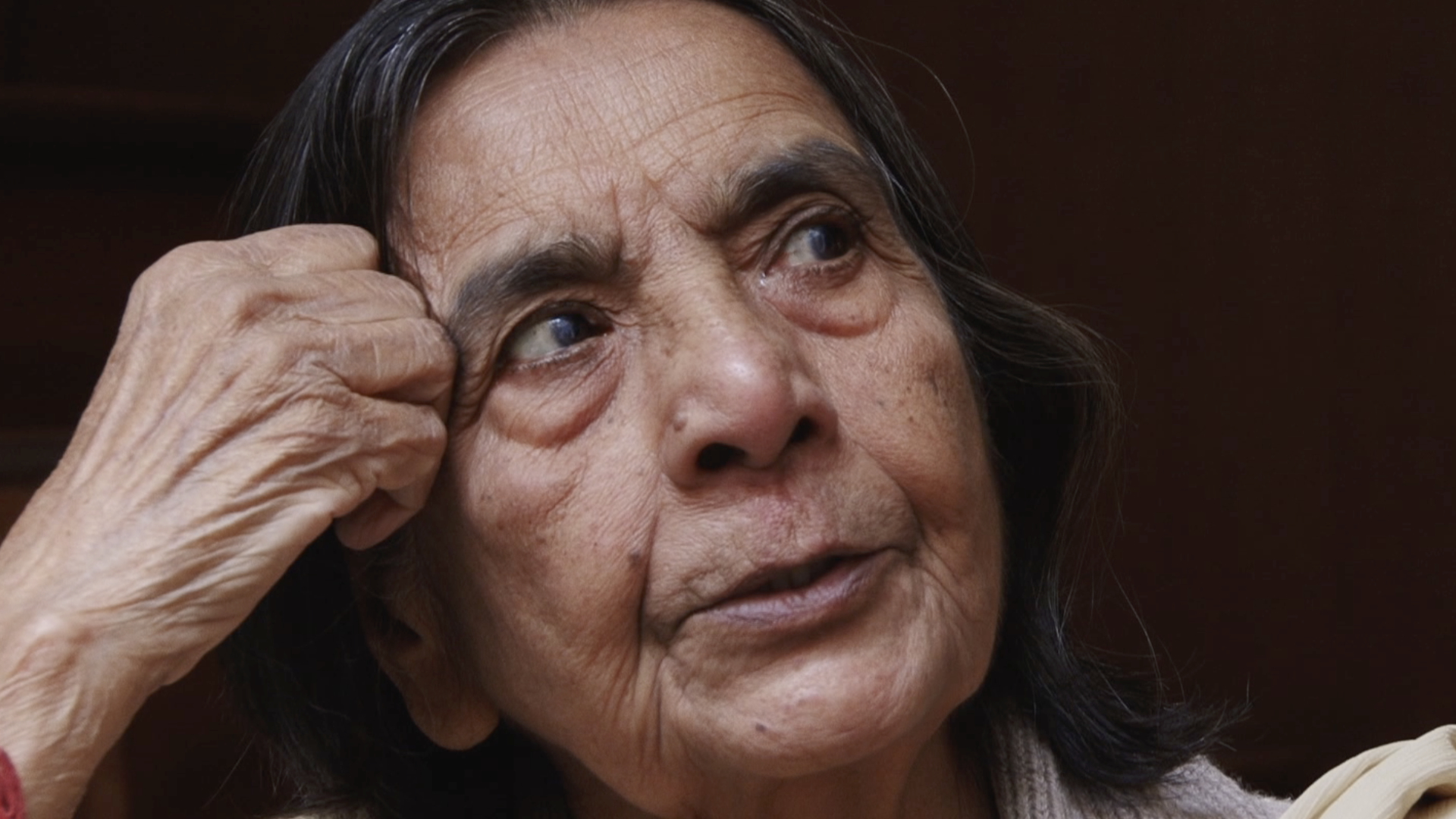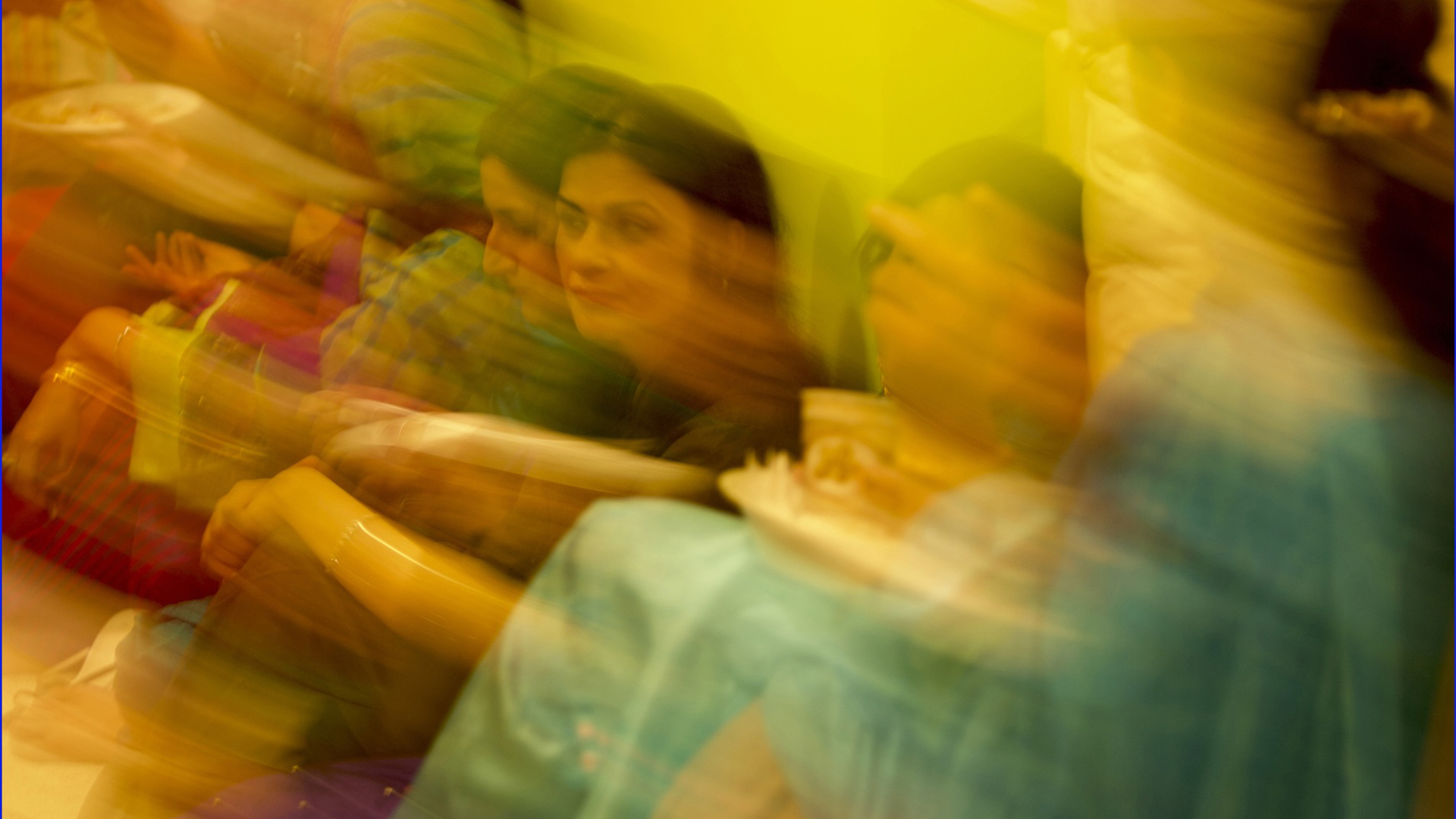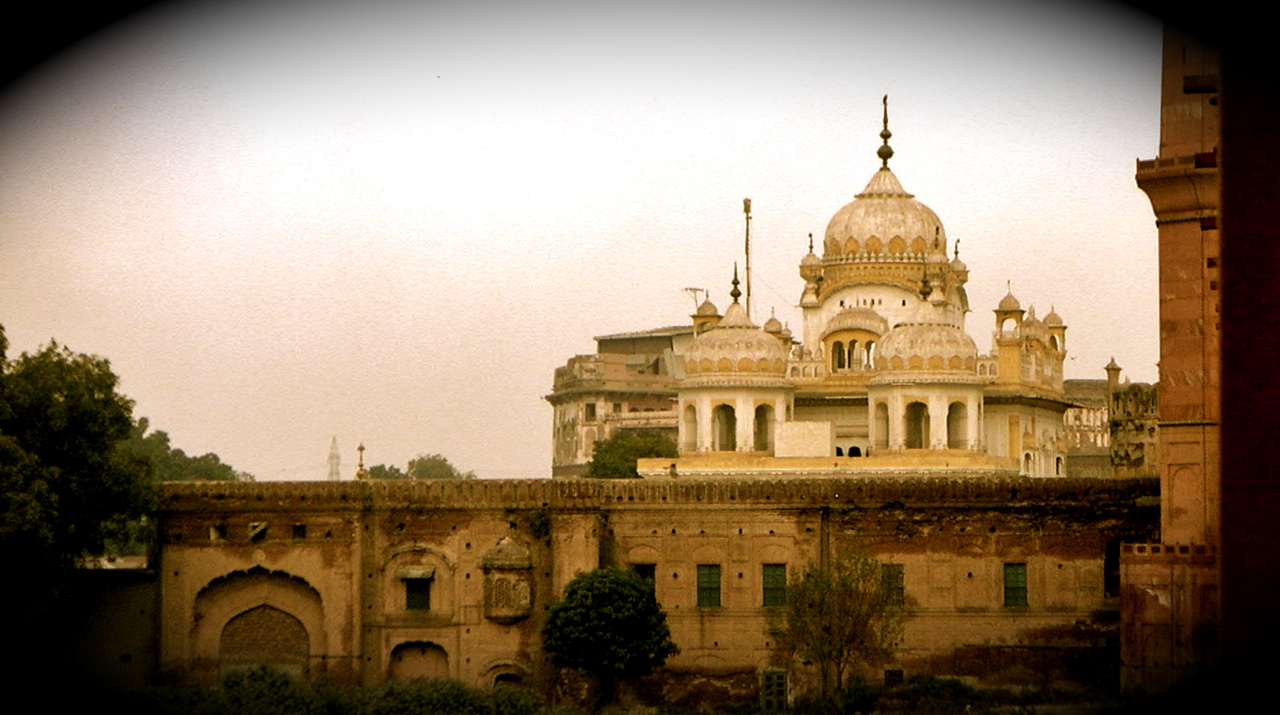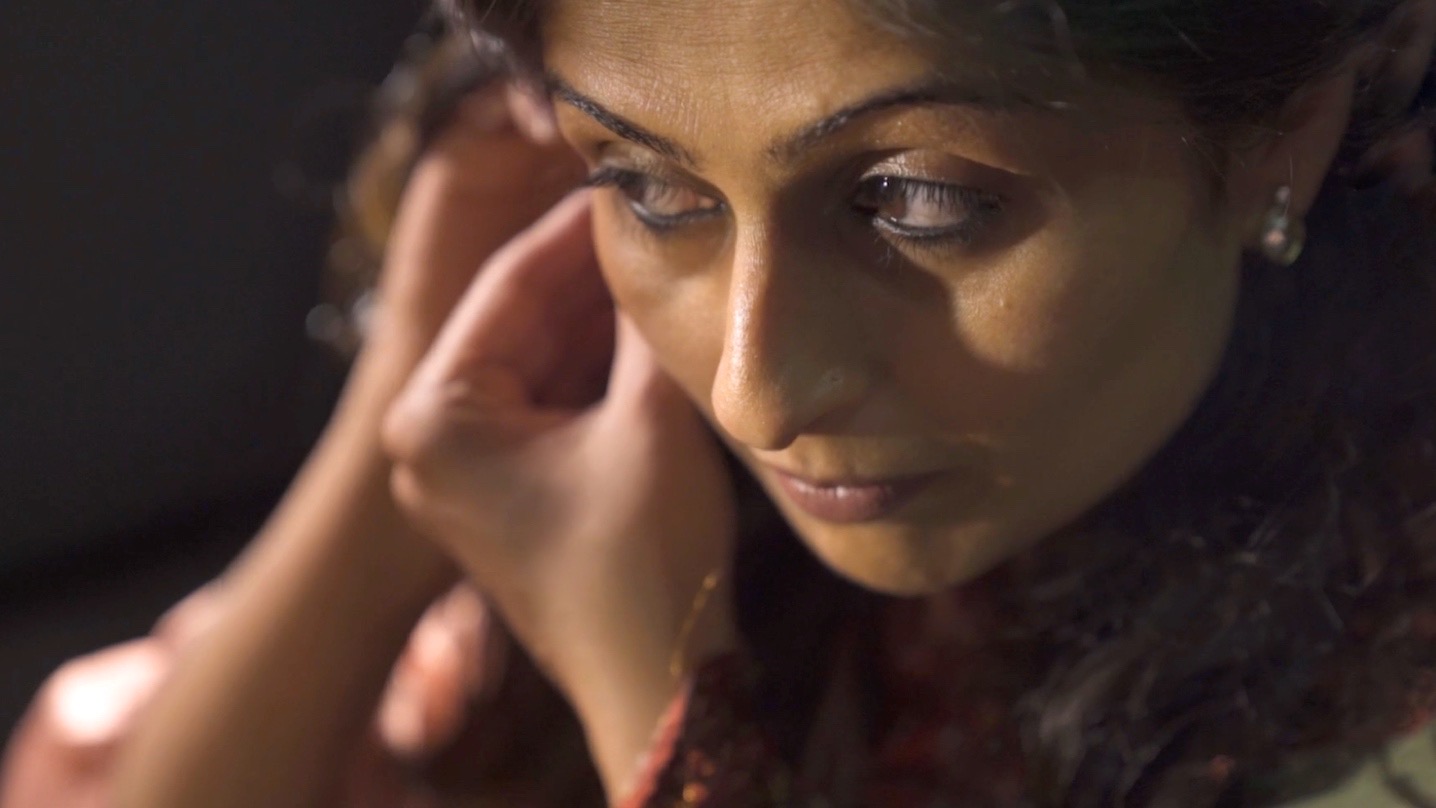A THIN WALL (2015) is a documentary about memory, history and the possibility of reconciliation. It focuses on the Partition of India in 1947, but derives lessons that remain urgently relevant today. Shot on both sides of the border, in India and Pakistan, A THIN WALL is a personal take on Partition rooted in stories passed down from one generation to another. It is written and directed by Mara Ahmed and co-produced by Surbhi Dewan. Both filmmakers are descendants of families torn apart by Partition. The film is also a work of art infused with original animation, music and literary writing.
‘Mara Ahmed’s A THIN WALL is akin to a beautiful and powerful book of essays: many voices sharing poetic, personal, and political stories and viewpoints, woven together to convey a universal aching. It is a textural and tangible journey that captures a profound sense of loss for more than one generation. May we all embrace the lessons this film has to offer.’ (Linda Moroney, Director, Greentopia Film)
“Surbhi and I both grew up with stories of Partition. Maybe they inspired our interest in displacement and our need to bridge cultural and geographic distances. Our families made the same terrifying voyage in 1947, but in opposite directions. We feel that Partition’s shadow still looms large in the subcontinent. It shaped the relationship between the two newly independent states of Pakistan and India. There is a need to revisit those stories in order to move beyond them. There is also a need to preserve and document this historical event, in the intimate voices of those who lived through it. “
(Mara Ahmed, Director and Producer, March 8, 2011)
You can watch A Thin Wall on Amazon’s Prime Video.
PRODUCTIONS NOTES
A Collaborative Project
This documentary is produced by filmmakers Mara Ahmed and Surbhi Dewan. Both are descendants of families torn apart by partition – one ended up in India, the other in Pakistan.
Surbhi and I met in 2008, at a film screening in Rochester, NY. As soon as we identified ourselves as South Asian, we began to talk about the partition of India. Surbhi’s family is from Lyallpur (now in Pakistan) and they moved to New Delhi, India, in 1947. My mother’s family is from Gurgaon (India) and they immigrated to Pakistan after partition. We both grew up with the same legacy of loss and displacement yet our perspectives were slightly different. Was partition a straightforward tragedy that should never have happened or was it a protective measure for a minority that would have been oppressed inside of united India? Was the entire concept of partition problematic or just its incompetent execution? We felt that we were meant to make a film together, a film that would be able to contain all these contradictions, a film shot on both sides of the border.
I knew that for me, my mother’s story would form the core of the film. She has vivid memories of partition, even though she was only 5 years old. Rather than being bitter or angry, she is naturally drawn to people from India – she feels a strange closeness to them. Perhaps there is a need to reconnect with something that was lost. I wanted to explore this seeming discrepancy. Surbhi interviewed her aunts and grandparent… See more
Historical Background
Professor Vazira Zamindar calls partition the “wound within, the mother of many millions of individual identity crises that seem never to go away.”
The Subcontinent had always been a deeply diverse, multi-religious, multi-cultural society. The decision to partition was taken by a narrow elite. The British were in a hurry to leave. Nehru and Jinnah were both ambiguous about the consequences of partition. A democratic decision taken by people living on the ground, might have been very different. As Dr. Zamindar says: “People learn to live together in ways that governments don’t.”
About the Film
When the British Empire left the Indian Subcontinent in 1947, their colony, the jewel in the imperial crown, was partitioned into a “Muslim” Pakistan and a “Hindu” India. Partition was a traumatic event of historical proportions. As caravans of people immigrated across randomly drawn borders, one million were killed in the ensuing violence, this within the space of a few months, while 10-12 million were displaced.
What happened in India can be used to understand conflict zones around the world. It reminds us that struggles for equal access to resources and political power are often portrayed as intractable religio-cultural conflicts or a “clash of civilizations.” With the advent of globalization and the increase in hyperconnectivity, it’s more important than ever to explore seemingly antithetical political movements and develop a more profound understanding of what they’re rooted in. We want to emphasize the necessity of intercultural communication and the ability to co-exist over divisive narratives of national homogeneity.
For people closer to the wound of the Indian partition, or other experiences of violence and dislocation, this film will not only archive first-hand accounts of that event but also stitch together memories of pre-partition India in order to contextualize how and why things changed in 1947. There has been no truth and reconciliation, no official acknowledgement of what happened and where we need to go from… See more
Film’s Artistic Treatment
A THIN WALL has been shot in three different countries, on two continents. We’ve captured some beautiful footage in Lahore and Delhi to give audiences a sense of place and culture. This documentary is filled with art: stunning painterly animation by Moscow-based artist and animator Gayane Bagdasaryan, the powerful words of British poet John Siddique and Pakistani writer Uzma Aslam Khan, original music by Brooklyn-based folk musician Sunny Zaman and piano performances by Ruth Demaree Peck. It also includes the minutely detailed and vivid paintings of world-renowned Pakistani artist and humanitarian Jimmy Engineer, who is famous for his almost Homeric Partition Series. Our team is diverse and intercontinental, a fact which underscores our belief in the universality of this film and the themes of coexistence which it highlights.
Rather than use archival footage and black and white photographs which continue to preserve the story of partition as a monochromatic historical episode, we chose to use artwork, poetry and music to re-create a bygone era in the lush colors of the present. Since we are interested in memory, dreamlike visual sequences and stream of consciousness explorations of the past are important stylistic elements of the film.
READING SUGGESTIONS
- Read Manto’s seminal short story about the partition of India, Toba Tek Singh, which encapsulates the horror and confusion of India’s partition in 1947. Translated from Urdu by Khushwant Singh.
- Khushwant Singh, Train To Pakistan, 1956
- Bapsi Sidhwa, Ice-Candy-Man by Bapsi Sidhwa, 1988
- Urvashi Bultali, The Other Side of Silence: Voices from the Partition of India by Urvashi Butali, 2000
- Stephen Alter, Amritsar to Lahore: A Journey Across the India-Pakistan Border, 2000
- Urvashi Butalia, Partition and Memory, 2001
- Ashis Nandy, The Death of an Empire, 2002
- Vinay Lal, Partitioned Selves, Partitioned Pasts: A Commentary on Ashis Nandy’s “Death of an Empire”, 2002
- Lucien W. Pye, The Partitions of Memory: The Afterlife of the Division of India; Communal Rage in Secular India, 2003
- William Gould, A review of The Long Partition and the Making of Modern South Asia: Refugees, Boundaries, Histories by Vazira Fazila-Yacoobali Zamindar, 2007
- Columbia University Press, Interview with Vazira Fazila-Yacoobali Zamindar, 2007
- Harihar Bhattacharyya, Partha Sarkar, Angshuman Kar, The Politics of Social Exclusion in India: Democracy at the Crossroads, 2009
- Iftikhar Dadi, Lines of Control: Partition as a Productive Space, 2012
PODCASTS
- Radio Open Source with Christopher Lydon, India-Pakistan: Vazira Zamindar on the raw wound of Partition, 2011.
- Radio Open Source with Christopher Lydon, Ayesha Jalal: Pakistan’s Revenge of the 40s, then the 80s, 2011.
FILMS
- Garm Hava (Scorching Winds): 1973 Indian film about partition, directed by M. S. Sathyu, based on an unpublished short story by Ismat Chughtai, and adapted for the screen by Kaifi Azmi
- Punjab Trilogy by Ajay Bhardwaj: Kitte Mile Ve Mahi (Where The Twain Shall Meet) 2005, Rabba Hun Ki Kariye (Thus Departed Our Neighbours) 2007, and Milange Babey Ratan de Mele Te (Let’s Meet At Baba Ratan’s Fair) 2012
- The Sky Below: 2007 documentary film directed by Sarah Singh. With Sanjana Kapoor.
OFFICIAL TRAILER
LIST OF ALTERNATIVE MEDIA
The concentration of corporate media ownership in the US, has made it more important than ever to consult alternative, non-mainstream media in order to be well-informed about what’s going on in America and the world. For a comprehensive list of thought-provoking alternative media, please click here.







There are 8 comments
[…] 10 days, 5 cities, 3 flights, 3 hotels, one train ride across the border to canada, 4 screenings of A Thin Wall, and lots of friends to connect with. […]
[…] screening of A Thin Wall at nazareth college yesterday, under the auspices of the hickey center for interfaith studies and […]
[…] had the wonderful fortune to screen the film, A Thin Wall, while on the programming committee for the High Falls Film Festival. It was a stunningly beautiful […]
[…] women’s council of RIT meeting yesterday, followed by a screening of the first 20 minutes of A Thin Wall. in my talk i was able to question the “exotic” nature of the indian partition by […]
[…] A Thin Wall has been selected by the New York Indian Film Festival and will be screened on Tuesday May 10, 6.30 pm, at Theater 5, Village East Cinemas, 2nd Ave @ 12th Street, NYC. Hope u can make it NYC friends! […]
[…] A Thin Wall will be screened as part of the South Asian Film Festival of Montréal 2016 on November 5, at 12:00 pm, at Montreal’s Concordia University. I plan on traveling there for the Q&A. Montreal friends, hope you can make it! […]
[…] night followed by celebrations and a delicious family dinner on saturday. on sunday, my film “A Thin Wall” was screened in vancouver and i got to skype with an extremely well-informed, lovely […]
[…] and is a broad survey of public opinion about America, shot entirely in Lahore. Her third film, “A Thin Wall”, explores the partition of India and possibilities of reconciliation. It premiered at the […]